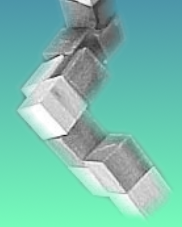 |
| |
| |
CONCLUSION: |
| |
|
Greedy algorithm implemented succesfully and results are satisfied with the papers which are published in this area. There is also dynamique programming algorithm proposed for minimizing the energy. However, greedy algorithm is stable, is flexible, allows hard constraints and runs much more faster than the dynamique programming.
Phantom image is used as an experimental model to represent image contours in a form that allows interaction with high level processes. When we apply the greedy algorithm on our image (region should be selected on the image) snake converges the selected region almost perfectly. Our program works satisfactorily according to constraints we have defined in the algorithm. To be able to improve the performance more constraints can be implemented and performance improves correspondingly. The more constraint we apply the more time we need. The most important challenging point we encountered is tendency of contours to shrink in lackness of specific constraints.
There is also new method carried on this area which is gradient vector flow. It is implemented as a diffusion of the gradient vectors of a gray-level or binary edge map derived from the image. According to the Chenyang Xu and Jerry L. Prince's paper gradient vector flow has a large capture range and is eligible to get snakes into boundary cavities. This algorithm can be worked as a future work.
For a future work it is also possible to work on a fast greedy algorithm and by increasing the constraints better snake convergence results can be obtained. This project is implemented for two dimensional (2-D) images. Applying our algorithm for three dimensional models might be a future study.
|
|
|
|
| |
|
|
| |
|
|
|
| |
|
|
|
|











